If you’ve ever dreamed of seeing the sky come alive in waves of green, purple, and pink light — Iceland is where those dreams turn real. Here, in the land of glaciers, volcanoes, and endless night skies, the Aurora Borealis (Northern Lights) is not just a natural wonder; it’s a spiritual experience.
This guide will help you plan your ultimate Northern Lights adventure — covering the best times, best places, photography tips, travel safety, and local secrets that make Iceland the world’s premier aurora destination.
Book your tour now: Northern Lights Private Guided Tour With Complimentary Professional Photos Iceland
If the lights aren’t visible on your tour night, we offer one free retry on the next available date (subject to availability and weather conditions).
Why Iceland Is the Perfect Aurora Destination
Iceland is positioned at high geomagnetic latitude — right under the Auroral Oval, the circular zone around the Earth’s magnetic poles where the Northern Lights most frequently appear. Because of this, the country enjoys consistent aurora activity from September through April.
Add to that the combination of:
• Low light pollution,
• Expansive, open landscapes,
• Reliable cloud forecasts, and
• Easy access to dark-sky areas,
and you get the world’s most accessible location for chasing the lights — even if you’re only visiting for a few days.
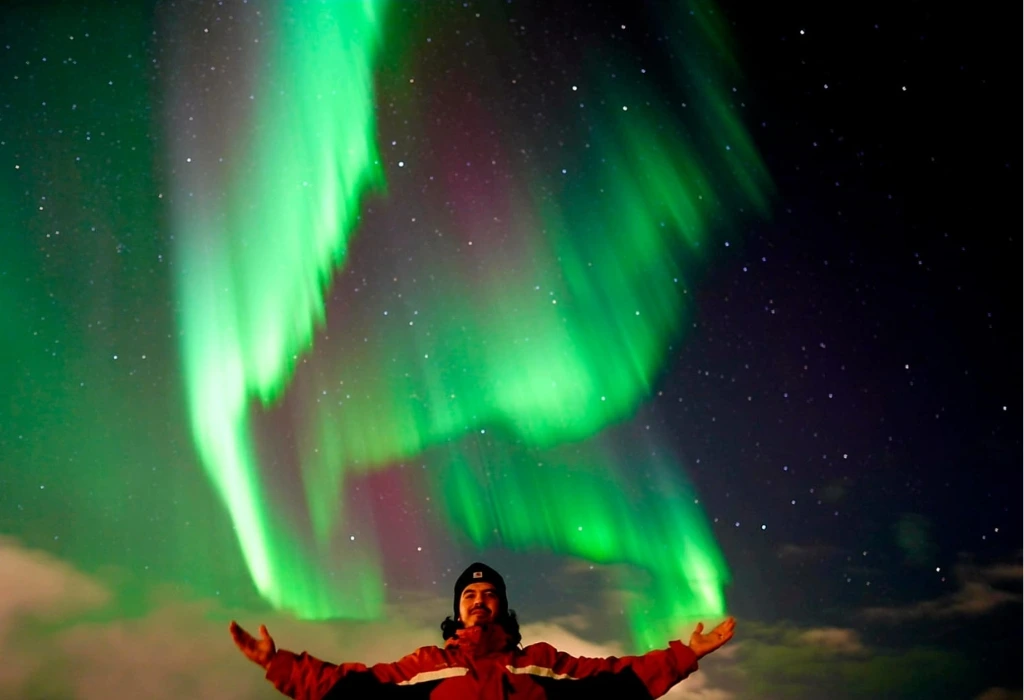
What Causes the Aurora Borealis?
Auroras occur when charged particles from the Sun (solar wind) collide with Earth’s magnetic field. When these particles interact with atmospheric gases like oxygen and nitrogen, they release energy as visible light — creating the dancing ribbons and curtains of color that illuminate the polar skies.
Different gases produce different colors:
• Green: Oxygen at lower altitudes (most common)
• Red: Oxygen at higher altitudes
• Purple or Blue: Nitrogen molecules
During periods of high solar activity, these displays can be so strong they appear even in southern parts of Iceland, and sometimes as far as the UK or northern US.
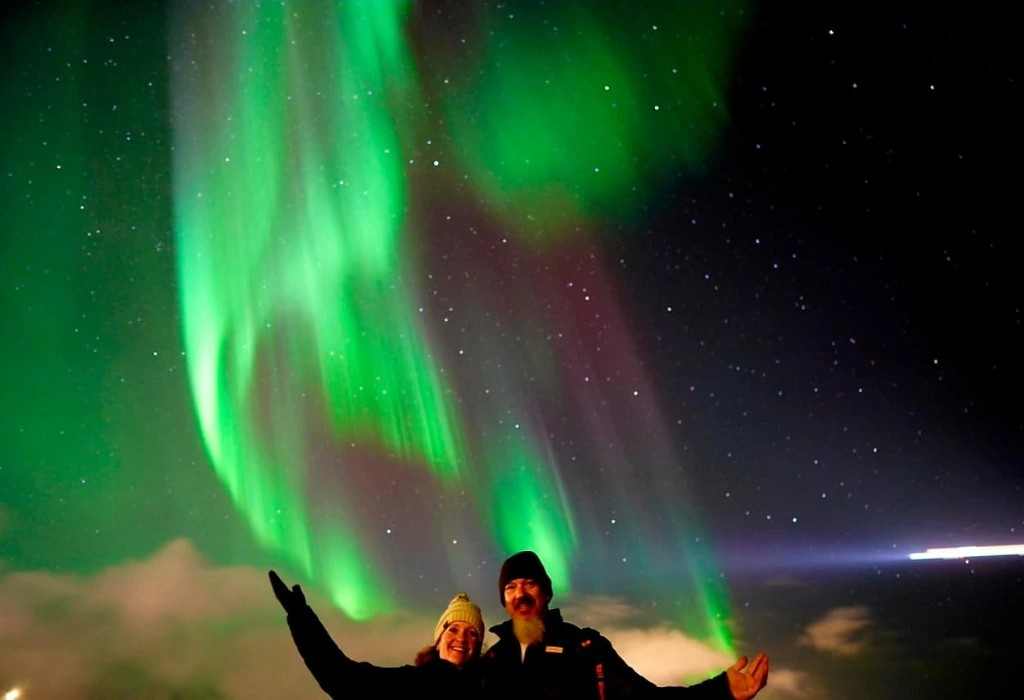
Best Time to See the Northern Lights in Iceland
Northern Lights Season: September to April
This is the golden window when Iceland experiences long, dark nights perfect for aurora viewing.
Let’s break it down month by month:
September–October: Nights grow longer, Milder temps, less snow, Aurora chances – Excellent
November–January: Deep winter darkness (up to 20 hours), Cold, snow, wind and Aurora chances – Highest
February–March: Still long nights, Clearer skies, Aurora chances – Excellent
April: Nights shorten quickly, Spring thaw, Aurora chances – Good (early April only)
May–August: Midnight sun, Too bright, Aurora chances – Not visible
Best Time of Night
The best hours are 10:00 PM to 2:00 AM. During this window, the sky is darkest, and solar particles reach the atmosphere with ideal geomagnetic activity.
You don’t need to stay up all night — just step out when the skies are clear and the lights may surprise you.
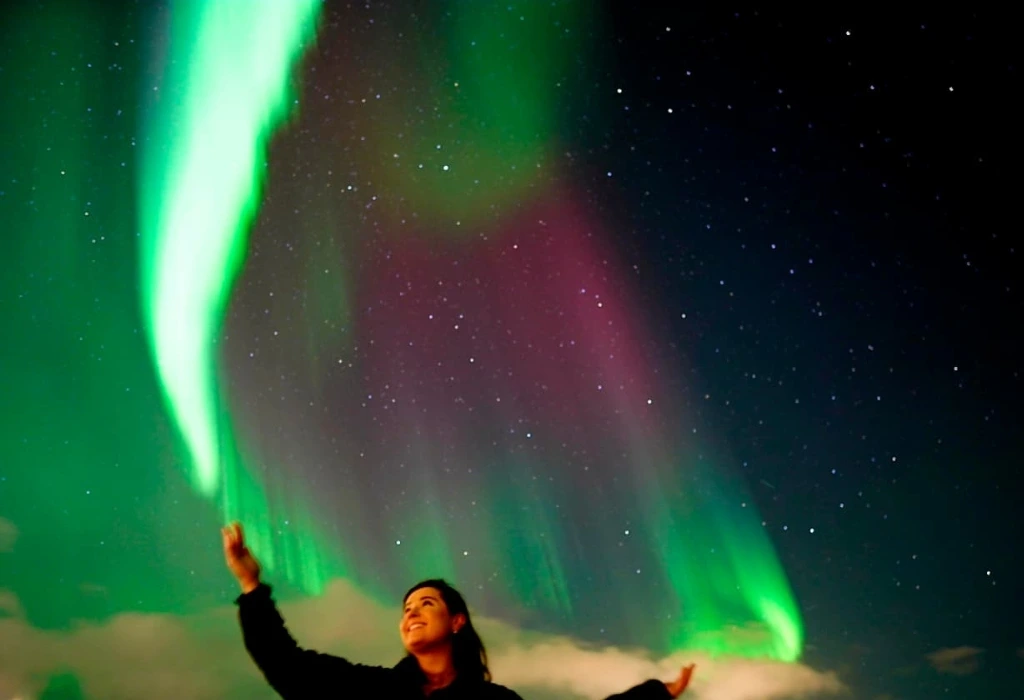
The Solar Cycle Factor
Every 11 years, the Sun’s activity peaks in what’s known as a solar maximum. During this period, solar storms are stronger and more frequent — meaning brighter, more frequent auroras.
We’re currently in Solar Cycle 25, peaking between 2024–2026, which makes 2025 one of the best years in decades to see the Northern Lights.
The Three Essentials for Aurora Viewing
1. Darkness
Get away from city lights. Even 20–30 minutes outside Reykjavík dramatically improves your chances.
2. Clear Skies
Clouds are the only true enemy of aurora watching. If it’s cloudy where you are, drive to a clearer area — Iceland’s weather changes fast.
3. Solar Activity
Watch the Kp Index (0–9). Even a Kp of 2 or 3 can produce good displays in Iceland.
When these three factors align, you’re in for an unforgettable show.
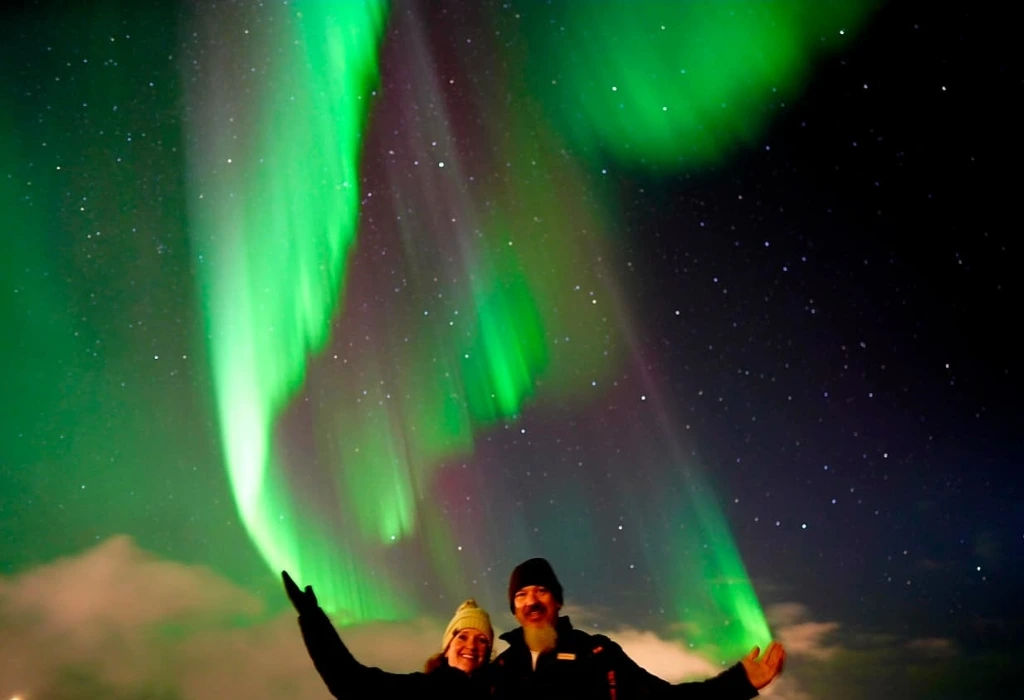
The Smart Aurora-Chasing Plan
Step 1: Check the Forecasts
Use two maps daily:
• Aurora forecast: Shows expected solar activity levels (Kp index).
• Cloud cover map: White means clear; green or gray means cloudy.
Step 2: Pick Your Direction
Drive toward clear skies — sometimes only 30–50 km away.
Step 3: Arrive Before 10 PM
Find a dark, safe spot with an open northern view and let your eyes adjust for 15–20 minutes.
Step 4: Be Patient
Even if the sky looks empty, don’t give up. The aurora can appear suddenly — starting as a pale gray arch before bursting into color.
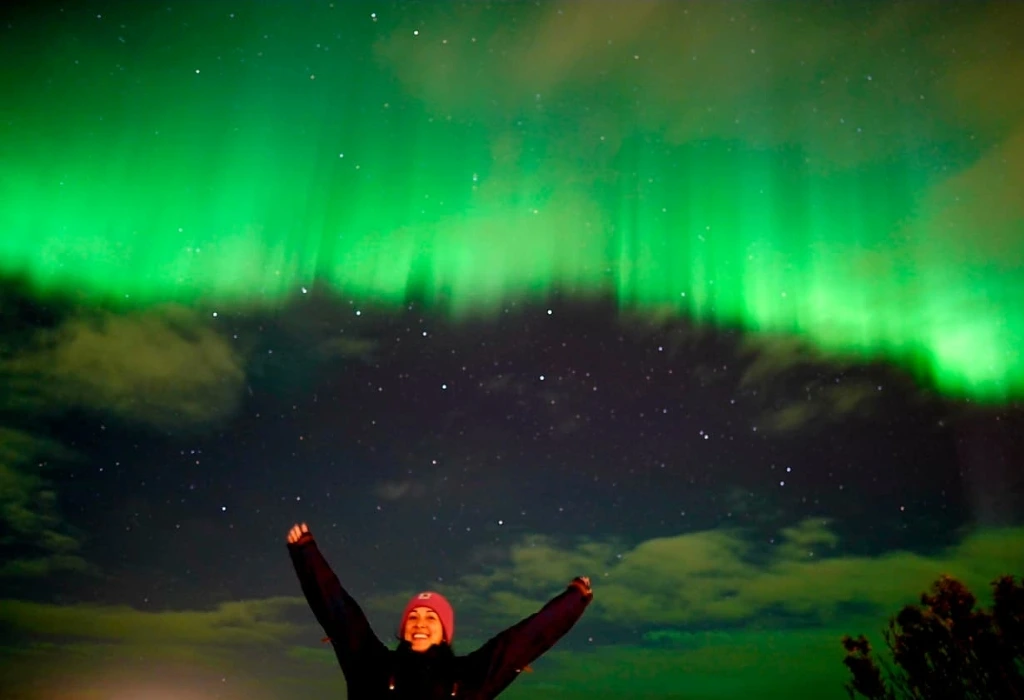
Northern Lights Photography Tips
Capturing the aurora isn’t about fancy gear — it’s about knowing your camera and being ready when the lights erupt.
Camera Settings to Start With:
• Mode: Manual
• Aperture: f/2.8 or wider
• ISO: 1600–3200
• Shutter speed: 4–8 seconds for bright lights, up to 15 seconds for faint ones
• Focus: Manual, set to infinity (use a bright star or distant light for precision)
• Tripod: Essential
• Remote shutter or timer: Prevents shake
Bonus tips:
• Keep spare batteries warm in your pocket — cold drains them fast.
• Use a red headlamp to preserve night vision.
• Compose with a foreground — water, ice, mountains, or a person for scale.
Safety Tips for Winter Aurora Hunters
1. Check road conditions: Visit road.is before driving; roads can be icy or closed.
2. Fuel up early: Many stations close after 10 PM in rural areas.
3. Bring emergency gear: Blanket, snacks, warm drink, flashlight, power bank.
4. Avoid the sea: Sneaker waves on black beaches are dangerous.
5. Drive slowly: Iceland’s rural roads are dark, narrow, and unpredictable.
6. Don’t rely on GPS alone: Save offline maps — cell coverage can drop in remote areas.
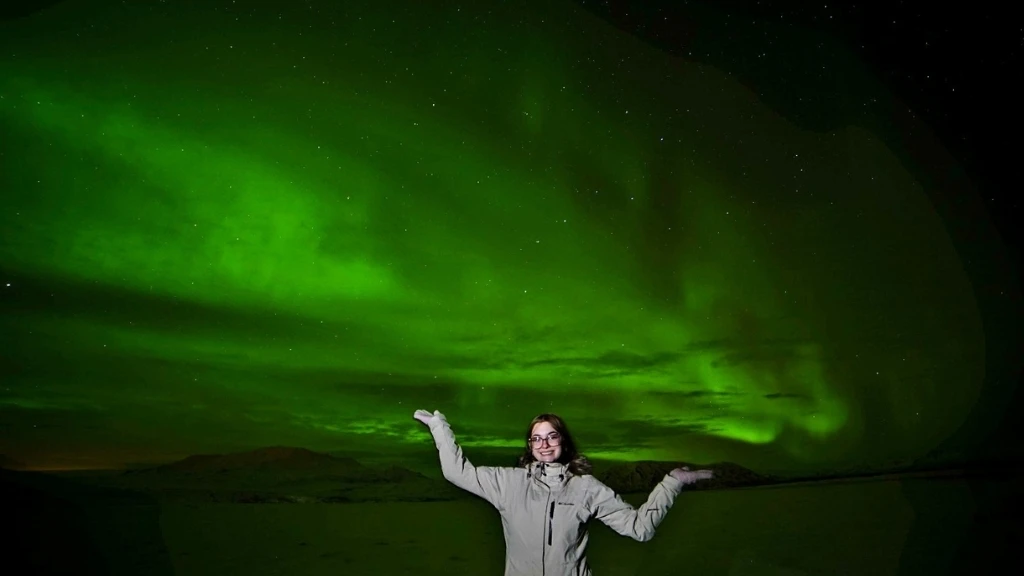
What If It’s Cloudy?
Aurora chasing is a game of patience. If your first night is cloudy:
• Drive to a clearer region — weather changes quickly in Iceland.
• Check the forecast multiple times a night.
• If clouds persist, enjoy other nighttime magic: hot springs, stargazing, or geothermal baths under open skies.
Remember: most travelers who stay in Iceland for three nights or more during aurora season see the Northern Lights at least once.
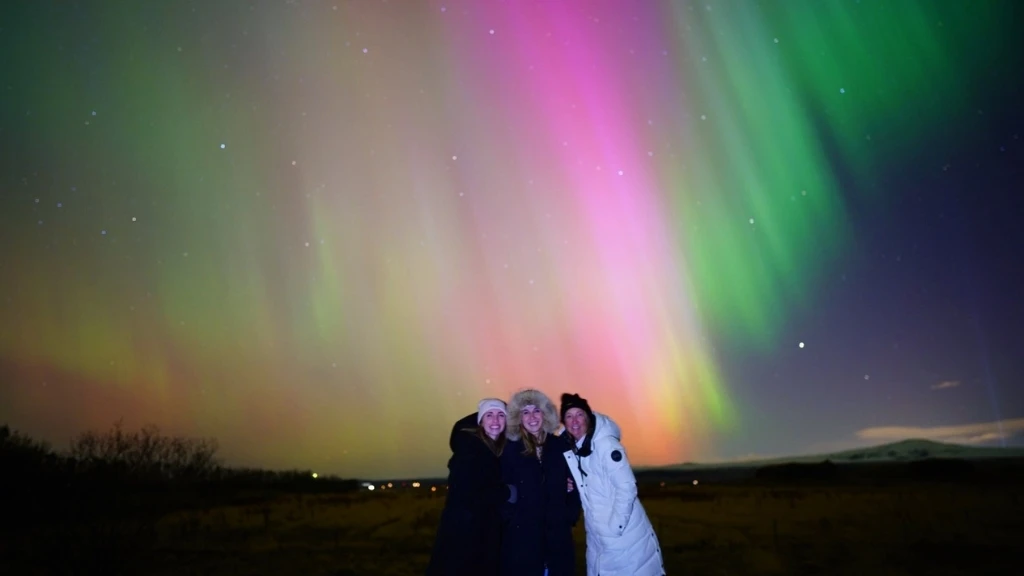
Aurora Tours vs Self-Drive: What’s Best?
Guided Tours
Pros:
• Expert guides know where to go based on live forecasts.
• Safe and comfortable transport.
• Great for solo travelers or first-time visitors.
Self-Drive Adventures
Pros:
• You can mix sightseeing with night hunts.
Cons:
• Requires experience driving in icy conditions.
• More planning and responsibility.
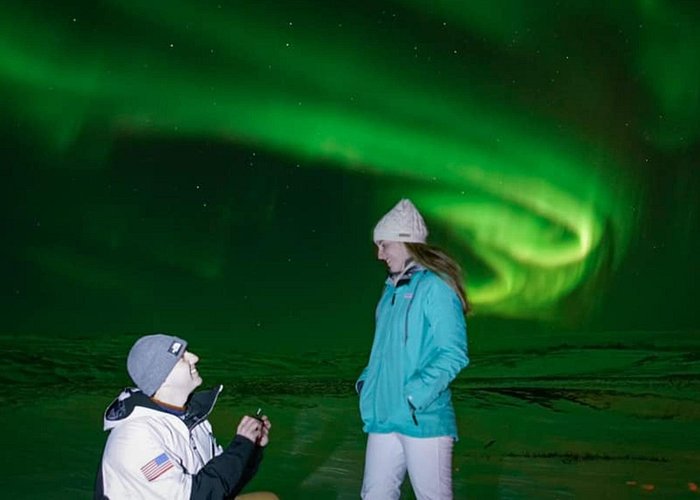
Combining the Aurora with Iceland Adventures
You don’t have to dedicate your entire trip to the Northern Lights. Pair it with:
• Golden Circle sightseeing (Þingvellir, Geysir, Gullfoss)
• South Coast waterfalls (Skógafoss, Seljalandsfoss)
• Blue Lagoon or Sky Lagoon soak after a long night
• Glacier hikes in Vatnajökull National Park
• Ice cave tours under glowing blue ice
This way, even if clouds hide the lights, your trip remains unforgettable.
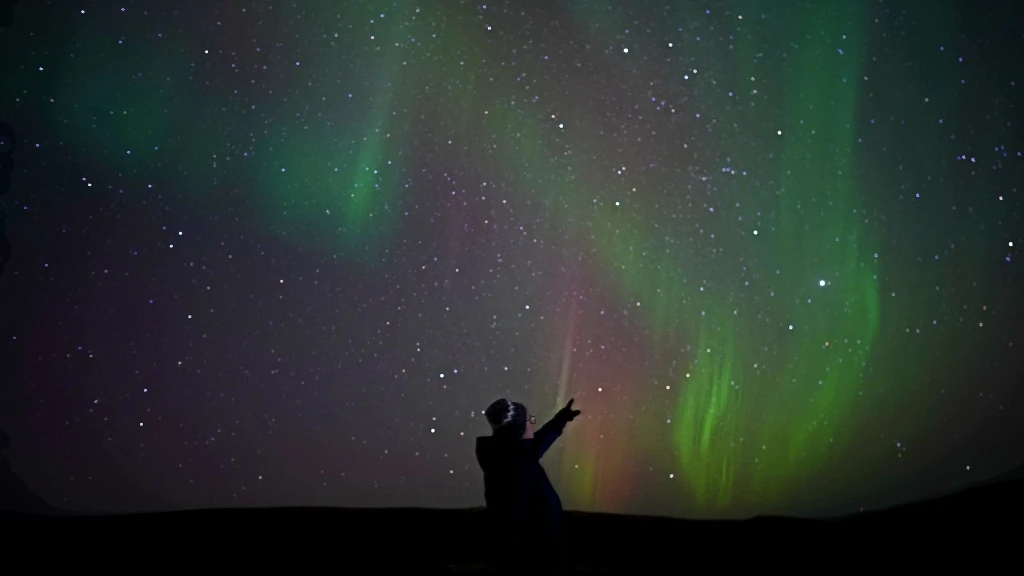
Common Questions About Northern Lights in Iceland
1. Can you see the Northern Lights in Reykjavík?
Yes — when conditions are strong and skies are clear. For best results, head to Grótta Lighthouse or any coastal viewpoint away from city glow.
2. How long do the lights last?
A single show can last anywhere from 5 minutes to 2 hours. Activity often comes in waves.
3. Are Northern Lights guaranteed?
No — they’re a natural phenomenon. But visiting between September and April for at least 3 nights gives you a high chance.
4. What color are they?
Mostly green, but sometimes pink, purple, or red depending on altitude and solar activity.
5. Is there an app for aurora forecasts?
Yes — apps like “My Aurora Forecast,” “Aurora Alerts,” or “Aurora Now” are great tools. Combine them with Icelandic weather maps for accuracy.

Packing Checklist for Aurora Chasers
• Warm waterproof jacket (down or insulated shell)
• Thermal base layers and socks
• Insulated boots with grip
• Gloves, hat, scarf
• Tripod and camera
• Extra batteries and memory cards
• Thermos, snacks, and blanket
• Offline maps & flashlight
• Patience — and hot chocolate
Responsible Aurora Tourism
• Stay on marked roads and paths — don’t damage fragile moss or lava fields.
• Keep headlights low near viewing areas to respect photographers.
• Take all trash back with you.
• Respect private property; many farms are on private land.
• Drive safely and never stop in the middle of the road for photos.
A 3-Day Sample Aurora Itinerary
Day 1: Arrival & Reykjavík Night
• Explore Reykjavík by day.
• After dinner, check cloud forecast.
• If clear, drive to Grótta Lighthouse around 10 PM.
Day 2: Golden Circle & Þingvellir
• Day trip through Þingvellir, Geysir, and Gullfoss.
• Return to Þingvellir at night for aurora watching over the lake.
Day 3: South Coast Adventure
• Drive to Vík, explore black beaches and waterfalls.
• Continue to Jökulsárlón Lagoon for evening reflections.
• Overnight nearby for one last aurora attempt.
Pro Tips for the Perfect Aurora Experience
1. Book at least 4–5 nights in Iceland to maximize odds.
2. Be flexible — change direction if clouds shift.
3. Avoid full-moon weeks for darker skies.
4. Don’t trust one forecast app — use multiple sources.
5. Always look north — auroras appear most often in that direction.
6. Carry a sense of wonder — every display is different.
Final Thoughts
Chasing the Aurora Borealis in Iceland is a once-in-a-lifetime adventure — but it’s not just about luck. It’s about preparation, patience, and persistence.
When the green glow first appears, everything around you goes silent — glaciers shimmer, waves crash in slow motion, and you realize you’re watching the Earth breathe light into the sky.
So, pack your camera, bundle up, and get ready for the magic. The Northern Lights are waiting — and Iceland is their perfect stage.
If the lights aren’t visible on your tour night, we offer one free retry on the next available date (subject to availability and weather conditions).
Book your tour now: Northern Lights Private Guided Tour With Complimentary Professional Photos Iceland
